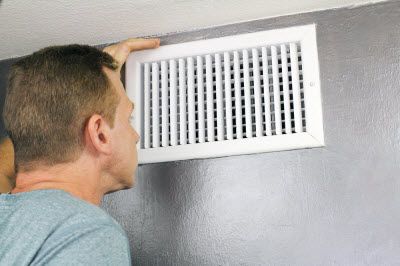Have you ever fired up your heater only to be greeted by a long, unceasing blast of cold air that never warms up? There aren't many things that are more frustrating for a homeowner. You flip on your heater when your home is uncomfortable, and the odds are that the blast of cold air hasn't helped the matter at all. Is your heater broken completely? Do you need to completely replace your system?
In this blog, we'll take a closer look at what can cause your heater to output nothing but cold air and explain what may need to be done to fix the issue.
Make Sure Your Thermostat is on Heat
This may seem like the silly and completely obvious solution, sort of like checking your gas gauge when your car dies or making sure that your new electronic device is plugged in when it refuses to turn on. However, you'd be shocked at how many times customers call for a heater blowing cold air, only to discover that the cause of the issue was their thermostat was set to “coolandquot; instead of heat.
It's an easy mistake to make. Over summer, we simply get used to switching the thermostat on and off to the “coolandquot; setting as it gets warm quite easily. Start your search here and you may save yourself a lot of trouble.
What Type of Heater Do You Have?
Once you've verified that the setting of your thermostat isn't the issue, the next big question to answer is what type of heating system do you have? While all heating systems have the same function, they can be performed in very different ways. Furnaces generate heat by burning fuel while heat pumps don't actually generate heat at all, but instead harvest it from the air outside and condense it to warm your home.
By far, the two most common types of forced-air heating equipment in the Bay Area are heat pumps and furnaces. Here are three common issues that can result in each of them blasting your home with an unending stream of cold air.
What Are the Most Common Heat Pump Problems?
The most common heat pump issues include:
Dying Compressor
Heat pumps are essentially the same thing as your air conditioner, just with the cycle reversed. Rather than collecting heat from your indoor air, they collect heat from the air outside, amplify it with a compressor, and then send it inside where air forced over your indoor coil extracts it and then warms your home. However, if your compressor can't compress your refrigerant, your heat pump simply won't work. Usually, you'll be able to tell if this is the case. However, faulty compressors tend to make a ton of noise and even compressors that don't work anymore significantly change the noise coming from your outdoor unit.
Refrigerant Leak
You need to have a very specific amount of refrigerant in your lines for your heat pump to work properly. If there is too much pressure, the lines could burst and your compressor could fail. Not enough pressure and your compressor and other components will be starved for refrigerant, causing them to fail and vacuums to form that could cause serious breakdowns. While your system should have the perfect amount of refrigerant in it under normal conditions, even small leaks can cause a shortage of refrigerant that can cause your system to break down.
Frozen Outdoor Unit
Your outdoor unit is naturally going to get extremely cold from the heat collection process. For refrigerant to extract heat energy from an already pretty cold atmosphere, the refrigerant flowing through it needs to be significantly colder and often well below the normal freezing point of water. Water vapor can build up on outdoor units, creating frost that then progresses to ice, and before you know it your outdoor unit is completely frozen over and can't collect any heat energy at all. Heat pumps will naturally run defrosting cycles periodically to prevent this from happening, but broken sensors or other flaws can cause these safety cycles to fail and freeze over your system.
What Are the Most Common Furnace Issues?
Here are the most common furnace problems:
Ignition Fault
An ignition fault is something that prevents your heating element from turning on. With a gas-powered furnace, the most common type in the Bay Area, an ignition failure usually means a faulty pilot light or faulty ignitor that can't light the gas flowing through the heating element itself. The easiest way to tell when you have this problem is that when you turn on your heater, you get nothing but cold air and you smell gas in your home.
Gas Connection Issue
If you don't smell gas and are getting nothing but cold air from your furnace, then there's a chance your issue is probably related to your furnace's gas connection. The gas valve may have been shut off or your gas supply line could have a problem. Either way, you should have your system checked by our technician as soon as possible.
Dying Heating Element
As they age, heating elements can become weaker and weaker. Eventually, they simply won't be able to produce a strong enough flame to keep up with the heat needed to warm the air in your heat exchanger. Replacing the heating element will usually solve this issue, but it may also be an indication that your furnace may need replacement. This isn't a common issue to have and it's usually a clue that other components of your HVAC unit may be quitting on you fairly quickly.
When your furnace is giving you trouble, call Valley Heating, Cooling, Electrical and Solar at (408) 868-5500 and we'll get it fixed for you as soon as possible.

